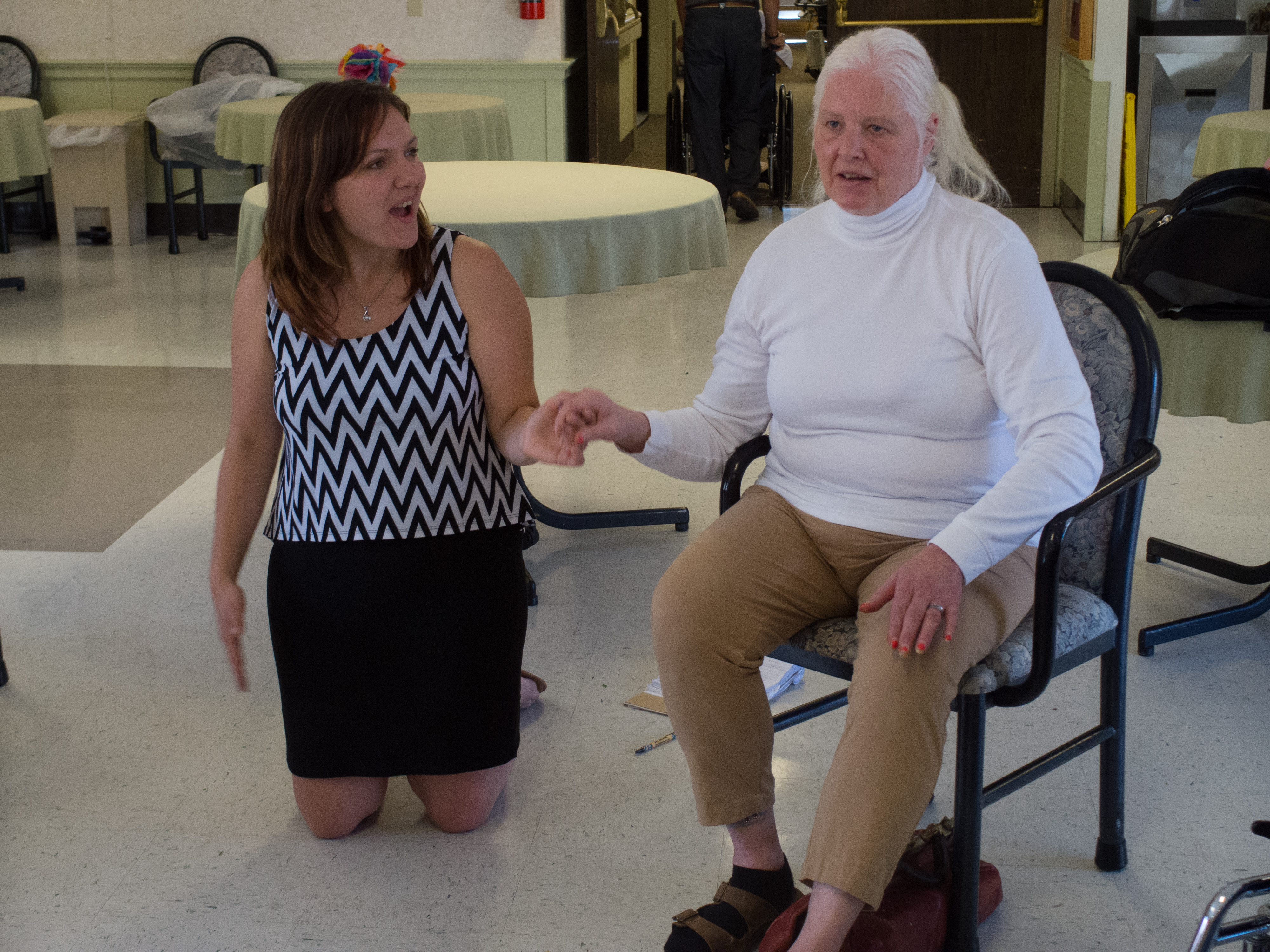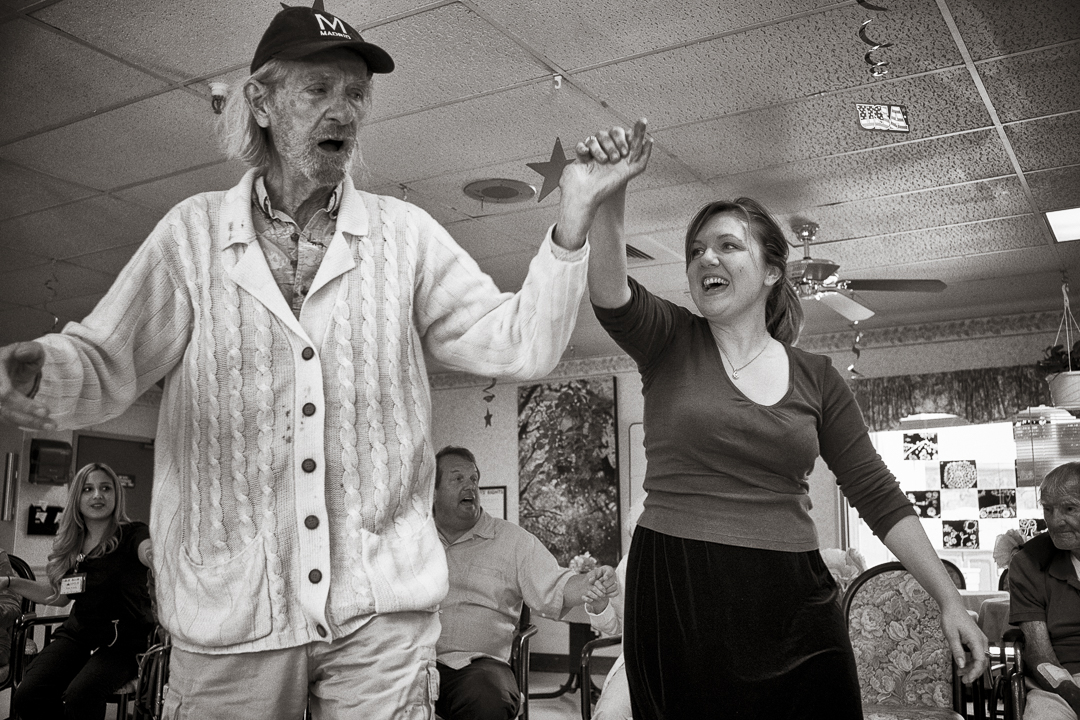



















From 2013-2018, I worked on Lifesongs, an intergenerational arts program that was founded in 2007 by The Santa Fe Opera and Littleglobe under the leadership of Acushla Bastible, Andrea Fellows Walters, and Molly Sturges. Christine Sandoval from the Santa Fe Care Center was the program’s founding partner. In 2011, Lifesongs became a program of the Academy for the Love of Learning in partnership with Littleglobe, and Acushla Bastible is the program’s Director.
We facilitated intergenerational creative collaborations between elders in nursing care and hospice, youth, community members, and artists, offering high production value concerts of the original musical works, in addition to trainings for caregivers and artists. We even recorded an NEA-funded full length album featuring some of the music and poetry. Here is one of the tracks from that album that I was featured on:
I wrote about my experience performing that song here. You can see a few of the other tracks from the album here:
When I saw the job listing for Lifesongs Program Coordinator, I wanted it badly. It was a dream job that perfectly reflected my creative interests and professional skillsets. I didn’t know it would change my life profoundly, or that I would miss this work so much after I stopped doing it.

I remember the first time I went to a Lifesongs ensemble, one of my first days working on the program. That session was facilitated by one of the program’s co-founders, Molly Sturges. We sat in a circle in a beautiful, large room at the Academy for the Love of Learning. Molly opened up the circle in the way that would become familiar to me and foundational to the work: one at a time, each person would hold the hands of the person next to them, look into their eyes, and say one word that described how they were feeling in that moment. Then, that person would turn to the next, and do the same, and we would go around the circle until the activity was complete. We would do the same thing to close the circle, and usually there would be a remarkable difference at the end of it.
The circle was a diverse group, a mix of elders, caregivers, volunteers, and artists. When we would collaborate with schools, kids would also be a part of the circle. That day, Molly led us in collaboratively creating a rhythmic environment, where each person added their part one at a time, and listened to where they fit within the whole. Drum circles were always healing and energetic. They shift the mood and feel of a space and a group palpably in a very short period of time.
I don’t exactly remember what kind of creative facilitation she used to exchange stories in that session. There were many ways that Lifesongs artists engaged the ensemble to collaboratively write music and poetry. All I remember is that I was moved to tears and joy from the wisdom, sincerity, and life that was shared in the circle that day. I felt like I experienced the full spectrum of life in a very short session, all of its joys, sorrows, and mysteries.
I am still in awe of the process by which Acushla Bastible directs the concerts into these elevated creative works of beauty and community exchange. She has an incredible aesthetic eye and director’s sense that brings chaotic and meaningful collaborations (productions that sometimes include a couple hundred people of all ages) into seamless expressions that honor our elders and the facets of life explored between the generations who collaborate on Lifesongs.
I fulfilled a number of roles for the program over those years: I was the program coordinator. I project managed five high production value concerts of the original creative works. I was trained as a facilitator and facilitated intergenerational ensemble sessions in nursing care communities, as well as a musical collaboration with an elder in hospice. I collaboratively wrote grants for the program, and I was one of the executive producers and performers on the NEA-funded record of music and poetry we created. I performed in all of the concerts I was a part of, and it was such an honor to perform the elders’ Lifesongs. I attended conferences and facilitated workshops and trainings that offered participants tools they could use in creative intergenerational group collaborations.
There is so much about Lifesongs that is deeper than the creative elements of it. It’s hard to write about and convey.
Several years ago, I sat by the bedside of a beloved member of our ensemble, Virginia, as she was passing onto the other side. She had been a teacher, and she experienced a number of devastating tragedies over the course of her life. She used a wheelchair, and she had lived in nursing homes for more than 20 years. Despite the adversity she met in her life, she was radiant, joyful, kind, and very wise. Her fashion sense was colorful and fabulous. She injected humor, insight, and poetry into every ensemble session she was a part of. “Is that a chocolate bar in your pocket, or are you just happy to see me?” She would say to one of the unsuspecting musicians as we rehearsed for a concert.
Every one who knew Virginia loved her. Her final lesson for me was in dying. I had heard she was close to passing, and I was honestly afraid to go and see her. But I mustered some courage, and I went. The room was filled with a liminality. It was a threshold space. You could feel her passage. It felt like her whole essence filled the room. She looked so beautiful, happy, and at peace. She was finally going to be liberated from her body and this life. Many people came to see her while I was there. At one point we sang “Amazing Grace,” and I cried. I had never sat at someone’s bedside while they were dying before. I learned that it could be a thing of beauty, a release that is not to be feared, but rather a mystery to reflect on in wonder and bittersweet joy.
There is a lot more I could say, but for now, I’ll leave you with this video of Vanessa Torres and me in 2016 singing a Lifesong Vanessa wrote collaboratively with Njoroge Tho-Biaz. This was at a poetry workshop with Gary Glazner in Washington, DC as part of the National Center for Creative Aging’s leadership exchange and conference.
That moment moved me to tears. Reflecting on the ephemeral nature of life gives it meaning. Our culture denies death, aging, grief, and the wisdom of our elders, but celebrating the full circumference of life can make us whole and human again.